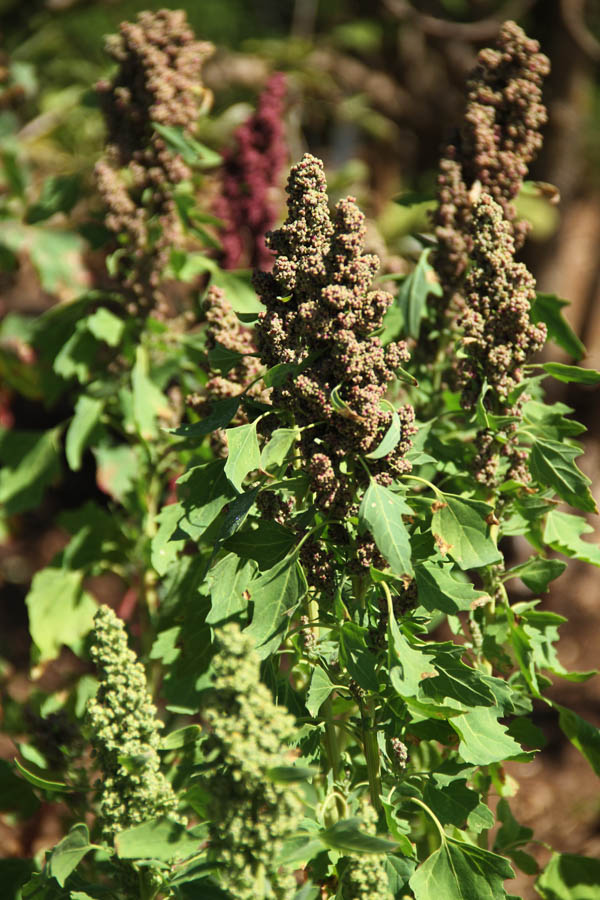Quinoa: Is It a Good Choice for Your Garden?

Quinoa has become a common item in trendy restaurants and upscale markets. But have you ever considered growing quinoa in your garden? Many areas of California have climates suitable for growing quinoa. Consider the soil, microclimate and watering requirements of quinoa to determine if it is a good choice for your garden.
Quinoa is a cool season annual plant related to amaranth and pigweed and belongs to the Amaranthaceae family. It also belongs to the Goosefoot subfamily, Chenopodioideae, and is most closely related to spinach, beets, chard, and epazote. Quinoa leaves and seeds are edible and exceptionally nutritious. Quinoa comes in a rainbow of colors; white, yellow, pinks, reds, purples and blacks. Young leaves may change color as they mature, turning from green to red or purple.
Indigenous to the high mountain plains of South America, quinoa has been cultivated for over 6,000 years in the Andes, and was an important staple food for the Incan people. Quinoa is believed to have been domesticated in the high plains around Lake Titicaca.
Varieties. Quinoa varieties known to perform well at lower elevations typical of California’s coastal valleys include several varieties native to Southern Chile; Dave 407, Chadmo, and Temuco.
How to Start. GardenZeus recommends starting quinoa from seed.
Soil Requirements. Quinoa prefers well-draining, sandy loam soil with a neutral pH, although it can grow in very acidic or alkaline soils.
Microclimate. Quinoa prefers daytime temperatures below 90°F and thrives when nighttime temperatures are significantly cooler than daytime temperatures. It prefers full sun, although it will benefit from some shade on hot days in California’s warmer inland valleys. Gardeners in California’s warmer inland valleys should chose a shaded region of the garden with a cooler microclimate and use shade cloth to try to moderate temperatures. Temperatures above 95°F can damage quinoa pollen, making plants unable to produce seed. Quinoa plants can tolerate light frost. Flowers are damaged by frost, which may cause pollen sterility. After seeds set, plants are more tolerant to frost and will endure temperatures as low as 20°F.
Planting Window. The best window for growing quinoa in many portions of California is late winter, after the threat of significant frost has passed, through late spring, when days are sunny but temperatures are cool but not hot.
Watering Needs. Once established, quinoa plants are very drought tolerant. A long taproot allows quinoa plants to develop an extensive, well-developed root system able to forage for water and nutrients in marginal soils. A healthy and well-developed quinoa plant will have a root system that is as deep as the plant is tall.
To view customized gardening information for your area, go to GardenZeus and enter your zip code.
Other articles of interest:

